home > articles > 5 Proofs For The Existence of God
Is there an intellectual basis for believing in God? Or is being religious just a matter of blind faith? Are there reasonable proofs for God? Christianity invites scrutiny into its claims and the reasons for trusting them.
written Dr Andrew Corbett pastor of Legana Christian Church in Tasmania, Australia, National President of ICI Theological College Australia [Printable edition]
Are there reasonable proofs for God? In December 2004 it was announced that long time British Professor and Philosopher, Anthony Flew, regarded by many as “the world’s most acclaimed atheist”, had renounced his atheism in favour of theism…
 This dramatic conversion has been likened by Astrophysicist and now one of the world’s leading Cosmologists, Dr Hugh Ross, as having the same impact on the academic world as an announcement that Billy Graham had renounced Christianity would have on the Church!
This dramatic conversion has been likened by Astrophysicist and now one of the world’s leading Cosmologists, Dr Hugh Ross, as having the same impact on the academic world as an announcement that Billy Graham had renounced Christianity would have on the Church!
One of the reasons cited by Prof. Flew was “the evidence.” He admitted that for a long time the growing problem of Evolution’s inability to explain how life began, or for that matter, how anything began, led him to the inevitable conclusion that it was an inadequate answer in the face of the evidence. Then when the DNA Genome code was unraveled the evidence for design became “undeniable”. These two pieces of evidence — 1. the existence of life demanding a Life-Source, and, 2. the scientific evidence of an extremely complex code in the make-up of that life- DNA, were enough for Prof. Flew to renounce atheism.
.
CAN WE PROVE GOD?
Some people feel that acceptance of God is entirely a matter of (blind-) faith. But the Scriptures actually claim that it is the truth which is the basis for this faith (Rom. 10:17). Truth is only truth if it is objective truth, that is, it is true for everyone regardless of time or circumstances. Thus, God is either true (and there can be objective proofs to support this), or He is not true and only subjective ‘truth’ can be offered for ‘proof’.
Some Medieval Philosophers, such as Anselm, argued that the fact mankind can imagine there being a God is itself a proof that there must be one. While this argument does have some merit, drawing on the positive aspects of human intuition, it has limitations. Taken to its natural application this means that if anything can be imagined it must exist. Based on the nightmares I had as a three and four year old boy- I really hope this theory isn’t true or I’m not going to sleep well tonight! This argument is an aspect of the ontological argument. The Greek word ontos means person. What Anselm was actually arguing for was that the universe displays the qualities of having being designed by a person. This includes an innate sense in those created by this Person that they have a Creator. The Apostle Paul described this knowledge as “plain” (Rom. 1:19) knowledge and in order to ignore it, a person needed to “suppress the truth” (Rom. 1:18). Ontology therefore also involves a certain reality to the world that includes not merely the physical, natural, material, laws of chemistry and physics, but also the reality of a world created with moral and psychological laws. To pretend that these laws do not exist is like being in the deep end of a swimming pool with a really big beach ball and denying that this ball wants to float on the surface. The claim that the universe has no such ontological realities, such as moral laws, is like suppressing that beach ball below the surface of the water of the pool in the vain belief that it requires no effort to do so. Even if a person believes that universal moral laws do not exist or that beach balls really do not want to float on the surface of a swimming pool, their belief does not negate the contradictory reality.
For since, in the wisdom of God, the world did not know God through wisdom, it pleased God through the folly of what we preach to save those who believe. For Jews demand signs and Greeks seek wisdom, but we preach Christ crucified, a stumbling block to Jews and folly to Gentiles, but to those who are called, both Jews and Greeks, Christ the power of God and the wisdom of God. For the foolishness of God is wiser than men, and the weakness of God is stronger than men.
First Corinthians 1:21-25
Tertullian once bragged that the main reason he so readily accepted Christianity was that it was ‘fundamentally absurd’. Perhaps he was alluding to First Corinthians 1-2 which talks about human wisdom and divine wisdom being incompatible. Some people are so committed to their beliefs that despite the evidence of truth they refuse to change their beliefs. In this way we observe that what some atheists claim is their scientific basis for unbelief is nothing more than their belief in their wishful opinions rather than evidence. Thus despite the mass of evidence to the contrary, many atheists refuse to accept that origin of life is best explained by what appears to be obvious: a Designer—the Creator.
We have to applaud Prof. Flew for having the courage to consider and then accept the evidence.

‘Proof’ though is measured, evaluated, and determined according to the type of claim. The type of proof needed to substantiate a claim involving chemistry is different to the type of proof needed to substantiate a claim made about history. Proof in physiology is different to the type of proof needed for psychology. Proof in philosophy is different to the proof required for philology. Proof required for biology is different to the type of proof required for theology. To demand that “hard” science (physics, biology, chemistry, astronomy) proof tests be the only acceptable means for testing a “soft” science (psychology, history, philosophy, literature) claim is unreasonable. Thus, imposing natural proof tests on supernatural claims is an unreasonable measure and totally inadequate. But where supernatural claims are made which have natural implications, such as “an invisible God created all that we see” (Romans 1:20) ‘proof’ takes on the garb of supporting or cumulative evidence when looking at the natural evidence to support this supernatural claim.
THE EVIDENCE
There have been a rash of very articulate and passionate atheists such as Richard Dawkins, (the late) Christopher Hitchens, Sam Harris, Daniel Dennett, who have attacked theism (the belief in God) by attacking Religious Fundamentalism (the poor behaviour of those claiming to believe in God and their abuse of Religious rules to oppress people). The type of God these Religious Fundamentalists promote is not the God I am arguing for. But to some it is going to sound like it.

 C.S. Lewis artfully makes the point in the “Magician’s Nephew” that there can be several people confronted with the evidence for God yet they can interpret that evidence quite differently. Lewis describes Uncle Andrew’s direct encounter with Aslan where he vehemently denied what he was seeing and hearing as making himself look stupid. And Lewis, the former atheist himself, continues, “Now the trouble about trying to make yourself stupider than you really are is that you very often succeed. Uncle Andrew did.” When it comes to proof for God, the evidence is cumulative and therefore acceptable proof.
C.S. Lewis artfully makes the point in the “Magician’s Nephew” that there can be several people confronted with the evidence for God yet they can interpret that evidence quite differently. Lewis describes Uncle Andrew’s direct encounter with Aslan where he vehemently denied what he was seeing and hearing as making himself look stupid. And Lewis, the former atheist himself, continues, “Now the trouble about trying to make yourself stupider than you really are is that you very often succeed. Uncle Andrew did.” When it comes to proof for God, the evidence is cumulative and therefore acceptable proof.
It is, then, true that everything teaches man his condition, but he must understand this well. For it is not true that all reveals God, and it is not true that all conceals God. But it is at the same time true that He hides Himself from those who tempt Him, and that He reveals Himself to those who seek Him, because men are both unworthy and capable of God; unworthy by their corruption, capable by their original nature.
Blaise Pascal, Pensees, 557
This evidence, or proofs, for the existence of God invites those atheists to consider it – especially for those who claim that there is none. At the very least it should be reasonably concluded that atheism (the absolute claim that there is no God after considering all possible knowledge) is a highly irrational position.
The following is a summary of the reasonable evidence for accepting that there is indeed a Personal Omnipotent God as described in the Christian Bible-
PROOFS FOR THE EXISTENCE OF GOD
1. The First Cause
Everything has a cause...
It is illogical to suggest that something had no cause. This is where the theory of evolution becomes inadequate. It can not explain how anything began, let alone life. When we consider the evidence (that there are things which exist) it logically demands that either something or someone caused it. We can then rule out ‘something’ as the solution since we would be returning to the original problem — what made the something? This demands that the First Cause must be an uncreated First Cause. That is, the First Cause has always existed (eternal). We don’t have to understand how this is possible, but it is reasonable to apprehend that it must be so.
The late Professor Stephen Hawking advanced the idea that the cosmos could have sprung into existence from nothing without a cause. He claimed that the pre-existent force of gravity could have supplied the energy and impetus to cause the Big Bang. This idea, of course, undermined his earlier seminal work with Professor Roger Penrose, where they demonstrated that the universe had a beginning and was not eternal. Hawking’s latter theories regarding cosmology (how the universe began) did not find wide acceptance among his peers and those who work in the field of cosmology because it is generally acknowledged that Prof. Hawking committed two errors. Firstly, he presupposed that ‘laws’ have creative power, and secondly, for his theory to be established he had to redefine nothing as having positive properties in which gravity could exist. Clearly his assumption about nothing begs the question because it fails to account for what caused these positive properties to exist without themselves being caused. And while we refer to observable, repeatable, testable, universal, physical interactions, such as gravity, as ‘laws’, this is a man-made designation and the ‘law’ itself possesses no mind which is a necessary and essential attribute for a First Cause.
 Dr. William Lane Craig presented the Kalam Cosmological Argument as the basis of his doctoral dissertation. The summary of it might be presented as-
Dr. William Lane Craig presented the Kalam Cosmological Argument as the basis of his doctoral dissertation. The summary of it might be presented as-
-
Whatever begins to exist, has a cause of its existence.
-
The universe began to exist.
-
Therefore, the universe had a cause for its existence.
The implication of the Kalam Cosmological Argument is that the universe must have had a cause. It also stands that this cause was uncaused. There are only three alternatives to this conclusion-
-
The universe (matter, time, space and energy) has always been, that is it is eternal.
-
Our universe was created by a powerful being/s from another universe (Multiverse Theory).
-
The universe does not actually exist, that is, this universe is an illusion.
In response to these alternatives we note-
-
The universe did have a demonstrable beginning. The Big Bang, where all matter, space, time, and energy began, is now attested to by over 20 major research projects. There is no evidence for the universe being eternal.
-
The Multiverse Theory does not resolve the issue of beginnings. In affect it becomes a series of infinite regression, that is, if someone from another “uni” verse (which actually voids the term “uni” verse) created our universe, then who created this person? If the answer is someone from another universe, then who created this person, and so on.
-
The idea that nothing is real might sound feasible in the philosophy classroom, but our self-consciousness and ability to interact with other people who are similarly self-conscious, immediately dismisses this fanciful theory. It does however remind me of the story of the philosophy Professor who held up a chair and asked his class to write a paper proving that the chair did not exist. Most students got to work immediately and referred to past philosophers and their writings to show why the chair did not exist. When the Professor graded the papers, there was only student who received top marks – even though he only wrote two words! He wrote, “What chair?”
Drawing upon the Kalam Cosmological Argument we know that our universe must have had a cause which was uncaused. This cause must have been outside of space, time matter and energy (as we know it). In theological terminology, we refer to: omnipresent, eternal, incorporeal, and omnipotence. We refer to the person satisfies these requirements as – God.
I made the earth
and created man on it;
it was my hands that stretched out the heavens,
and I commanded all their host.
Isaiah 45:12
2. The Universe Exhibits Design
There is evidence for design…
The unraveling of the Human Genome Code was announced to the world as the discovery of the language of the Creator by then President, Bill Clinton. What scientists discovered was an extremely sophisticated genetic language necessary for even the simplest life forms to exist. To believe that this level of apparent design happened either randomly or by chance is a mathematical equation of probability with more zeros than I care to type (plus I don’t know what the word is for numbers which are thousands of trillions!).
Read Peer Reviewed Scientific Articles supporting the case for design in the universe
The universe displays an amazingly complex level of interdependency which logically leads to the conclusion that it was designed that way. There are just too many coincidences of such “just rightness” for it too be a random haphazard coincidence. The earth is “just the right” distance from the Sun; it contains “just the right” mixture of chemicals and gases to sustain life; humans have “just the right” ability to breath these gases; the human body has “just the right” synergy of internal organs in order to function, and so on.
Its important to note that the Bible does not give a date for the commencement of creation of the universe, or the date for the creation of mankind. The universe may well be 13,700,000,000 years old, and mankind’s origins may well be as recent as 150,000 – 200,000 years ago. These numbers are in no way counter to the Biblical record, and extremely compatible with the evidence. (See, “Who Was Adam?” by Dr. Fazale Rana, and Dr Hugh Ross, RTB Press, 2015, p. 66-67.)
“Perhaps the most popular and intuitively plausible argument for God’s existence is the so-called argument from design. According to this argument, the design that is apparent in nature suggests the existence of a cosmic Designer…Although I was once sharply critical of the argument to design, I have since come to see that, when correctly formulated, this argument constitutes a persuasive case for the existence of God.”
“There IS a God”, Antony Flew, Harper One, 2007:95
Antony Flew artfully describes the design of the universe, and in particular its obvious design for humans, by asking his readers to imagine arriving at a motel room without a booking. As they come into their assigned room their favourite CD is playing their favourite track. As they bring their bags into the room they smell a very familiar fragrance. In fact, it is so familiar because it is their favourite scent. As they place their bags down they notice a basket of their favourite food waiting for them on the bed. On the wall hangs a copy of their favourite artwork. In the mini-bar there is a complimentary block of their favourite chocolate next to their favourite soft drink. It appears that someone knew they were coming and also knew they would be staying in this room!
In Flew’s scenario, there are just a handful of parameters (the music, the scent, the food, the drink, the artwork) that indicate that someone designed the room for a particular guest. According to Dr Hugh Ross of Reasons To Believe (www.reasons.org) there are over 400 parameters that are simultaneously needed in order for human life to be possible on earth. If one takes Flew’s analogy and considers not just the parameters that make life possible, but those which make life enjoyable and give pleasure to life, we soon discover that this list of design parameters climbs to over 600!
For Flew the reasons for so many “Anthropic” design parameters became undeniably obvious: there must be a Designer. He argues that if all it takes is five or so parameters in a motel room for us to conclude that someone designed our arrival, then what do you do with an entire planet that displays around 600 such parameters?
Dr Hugh Ross has been one of the pioneers in developing a comprehensive list of all the parameters necessary for human life.
Human existence is possible because the constants of physics and the parameters for the universe and for planet Earth lie within certain highly restricted ranges. John Wheeler and others interpret these amazing “coincidences” as proof that human existence somehow determines the design of the universe. Drawing an illogical parallel with delayed-choice experiments in quantum mechanics, they say that observations by humans influence the design of the universe, not only now, but back to the beginning. Such versions of what is called the “anthropic principle” reflect current philosophical and religious leanings towards the deification of man. They produce no evidence to support the notion that man’s present acts can influence past events. Furthermore, their analogies with quantum mechanics break down on this point. The “coincidental” values of the constants of physics and the parameters of the universe point, rather, to a designer who transcends the dimensions and limits of the physical universe.
Dr. Hugh Ross, https://www.origins.org/articles/ross_designanthropic.html, as of March 2009
In one of his earliest articles on the parameters necessary for human life (https://www.origins.org/articles/ross_designanthropic.html, as of March 2009) Dr Ross discusses some of his early findings-
Cosmic Connection
Now that the limits and parameters of the universe can be calculated, and some even directly measured, astronomers and physicists have begun to recognize a connection between these limits and parameters and the existence of life. It is impossible to imagine a universe containing life in which any one of the fundamental constants of physics or any one of the fundamental parameters of the universe is different, even slightly so, in one way or another.
From this recognition arises the anthropic principle—everything about the universe tends toward man, toward making life possible and sustaining it…
Insufficient Universe
It is clear that man is too limited to have created the universe. But, it is also evident that the universe is too limited to have created man. The universe contains no more than 1080 baryons (Baryons are protons and other fundamental particles, such as neutrons, that decay into protons) and has been in existence for no more than 1018 seconds…
The bottom line is that the universe is at least ten billion orders of magnitude (a factor of 1010,000,000,000 times) too small or too young for life to have assembled itself by natural processes. (A common rebuttal is that not all amino acids in organic molecules must be strictly sequenced. One can destroy or randomly replace about 1 amino acid out of 100 without doing damage to the function of the molecule. This is vital since life necessarily exists in a sequence—disrupting radiation environment. However, this is equivalent to writing a computer program that will tolerate the destruction of 1 statement of code out of 1001. In other words, this error-handling ability of organic molecules constitutes a far more unlikely occurrence than strictly sequenced molecules).
The evidence for the universe being designed is overwhelming. This observation is not original. It was stated much earlier by one of the world’s leading cosmologists and physicists, Paul Davies, who said-
“the impression of design is overwhelming”
Paul Davies, “The Cosmic Blueprint: New Discoveries in Nature’s Creative Ability To Order the Universe”, Simon and Schuster, New York, 1988:203
Dr. Hugh Ross goes on in his article to list 19 specific parameters necessary for a planet to sustain complex life-
1. Number of star companions
- if more than one: tidal interactions would disrupt planetary orbits
- if less than one: not enough heat produced for life
2. Parent star birth date
- if more recent: star would not yet have reached stable burning phase
- if less recent: stellar system would not yet contain enough heavy elements
3. Parent star age
- if older: luminosity of star would not he sufficiently stable
- if younger: luminosity of star would not be sufficiently stable
4. Parent star distance from center of galaxy
- if greater: not enough heavy elements to make rocky planets
- if less: stellar density and radiation would he too great
5. Parent star mass
- if greater: luminosity output from the star would not be sufficiently stable
- if less: range of distances appropriate for life would be too narrow; tidal forces would disrupt the rotational period for a planet of the right distance
6. Parent star color
- if redder: insufficient photosynthetic response
- if bluer: insufficient photosynthetic response
7. Surface gravity
- if stronger: planet’s atmosphere would retain huge amounts of ammonia and methane
- if weaker: planet’s atmosphere would lose too much water
8. Distance from parent star
- if farther away: too cool for a stable water cycle
- if closer: too warm for a stable water cycle
9. Thickness of crust
- if thicker: too much oxygen would he transferred from the atmosphere to the crust
- if thinner: volcanic and tectonic activity would be too great
10. Rotation period
- if longer: diurnal temperature differences would he too great
- if shorter: atmospheric wind velocities would he too great
11. Gravitational interaction with a moon
- if greater: tidal effects on the oceans, atmosphere, and rotational period would he too severe
- if less: earth’s orbital obliquity would change too much causing climatic instabilities
12. Magnetic field
- if stronger: electromagnetic storms would be too severe
- if weaker: no protection from solar wind particles
13. Axial tilt
- if greater: surface temperature differences would be too great
- if less: surface temperature differences would he too great
14. Albedo (ratio of reflected light to total amount falling on surface)
- if greater: runaway ice age would develop
- if less: runaway greenhouse effect would develop
15. Oxygen to nitrogen ratio in atmosphere
- if larger: life functions would proceed too quickly
- if smaller: life functions would proceed too slowly
16. Carbon dioxide and water vapor levels in atmosphere
- if greater: runaway greenhouse effect would develop
- if less: insufficient greenhouse effect
17. Ozone level in atmosphere
- if greater: surface temperatures would become too low
- if less: surface temperatures would he too high; too much uv radiation at surface
18. Atmospheric electric discharge rate
- if greater: too much fire destruction
- if less: too little nitrogen fixing in the soil
19. Seismic activity
- if greater: destruction of too many life-forms
- if less: nutrients on ocean floors would not be uplifted
Dr Ross continues on to say that there are even more necessary parameters for a planet to sustain life-
About a dozen other parameters, such as atmospheric chemical composition, currently are being researched for their sensitivity in the support of life. However, the nineteen (parameters) listed (in Table 1, above) in themselves lead safely to the conclusion that much fewer than a trillionth of a trillionth of a percent of all stars will have a planet capable of sustaining life. Considering that the universe contains only about a trillion galaxies, each averaging a hundred billion stars, we can see that not even one planet would be expected, by natural processes alone, to possess the necessary conditions to sustain life. No wonder Robert Rood and James Trefil (Rood, Robert T. and Treffi, James S. Are We Alone? The Possibility of Extraterrestrial Civilizations. New York: Charles Scribner’s Sons, 1983) and others have surmised that intelligent physical life exists only on the earth. It seems abundantly clear that the earth, too, in addition to the universe, has experienced divine design.
Dr. Hugh Ross, “Design & The Anthropic Principle”, https://www.origins.org/articles/ross_designanthropic.html
Professor Antony Flew marvels at the complexity of life’s design as he writes-
…there is a rich narrative drama surrounding our current understanding of the cell…The genetic message in DNA is duplicated in replication and then copied from DNA to RNA in transcription. Following this there is translation whereby the message from RNA is conveyed to the amino acids, and finally the amino acids are assembled into proteins. The cell’s two fundamentally different structures of information management and chemical activity are coordinated by the universal genetic code.
“There IS a God”, Antony Flew, Harper One, 2007:126-127
Professor Paul Davies calls the undeniable design of universe and in particular earth’s unique place in the universe as The Goldilocks Enigma. There are simply too many ‘just rights’ in the universe to dismiss the universe’s obvious design.
While the late Professor Carl Sagan dismissed planet earth as an insignificant, pale blue dot, his successor, Professor Brian Greene (Professor of Mathematics & Physics at Columbia University), is far less prepared to deny the obvious. He says that the fact of the universe’s designed cannot be denied so the real issue is not whether it is designed but who is the Designer? Professor Greene appeases atheists by avoiding the theologically loaded term: “God”, instead opting for the term Grand Organising Designer, which coincidentally equates to G.O.D.
He answered, “Have you not read that he who created them from the beginning made them male and female,
Matthew 19:4
3. Universal Moral Laws
There is intrinsic morality which needs a point of reference...
How do we know what ‘evil’ is? How do we know what ‘good’ is? These concepts demand either the existence of a standard to make such evaluations, or an understanding what these concepts mean. Each of us are born with an innate sense of morality. We each instinctively know what is right and wrong. It is incredible to consider that no matter time, culture, geographic location, or people, the Moral Law has been universally acknowledged.
William Lane Craig says it this way-
“1. If God does not exist objective moral values do not exist.
2. Objective moral values do exist.
3. Therefore, God exists.”
Dr. William Lane Craig, “The Moral Argument, Part1”, Defenders Podcast, 15th October 2007
Is rape always wrong?
Is the worst abuse of children always wrong?
Is genocide always wrong?
Yes. Yes. Yes. There seems to be something intuitive within us all that knows that all of these acts are evil. Rape is not wrong because there is a statute against it. It is wrong because it is wrong.
After World War II Nazi war criminals were judged at Nuremberg. The prosecutors had a major problem though. The defendants had not broken any laws! Even though they were responsible for the mass murder of millions of people (including Jews, Gypsies, and Christians). Since they were merely carrying out the policies of the lawful, official German government, the prosecutors were initially at a loss about how on earth they could charge them with any crimes.
In a moment of inspired genius one of the prosecutors said they could legitimately charge these SS Officers with crimes against the laws common to all of humanity (the Natural Law). Thus, the charge of Crimes against Humanity was introduced and universally accepted. It was upon the basis of the court accepting that there was indeed a set of objective moral laws that universally define right from wrong that they were able to proceed in the prosecution of Nazi War Criminals.
There are of course those who object to the idea of acknowledging that there are objective moral laws presumably because it interferes with their lifestyle and sexual proclivities.
This tends to confirm that all of creation bears the finger-prints of a Creator who is fundamentally good and right. That is, we each share a knowledge of what is right and wrong not just because we are taught or conditioned to accept these values, but because we are born with them.
After Dinesh D’Souza debated the atheist Peter Singer about intrinsic morality being an argument for God’s existence, he was stunned with Singer’s admission-
I write this fresh from debating bioethicist Peter Singer on “Can we be moral without God?” at Singer’s home campus, Princeton University. Singer is a mild-mannered fellow who speaks calmly and lucidly. Yet you wouldn’t have to read his work too long to find his extreme positions. He cheerfully advocates infanticide and euthanasia and, in almost the same breath, favors animal rights. Even most liberals would have qualms about third-trimester abortions; Singer does not hesitate to advocate what may be termed fourth-trimester abortions, i.e., the killing of infants after they are born.
Singer writes, “My colleague Helga Kuhse and I suggest that a period of 28 days after birth might be allowed before an infant is accepted as having the same right to life as others.” Singer argues that even pigs, chickens, and fish have more signs of consciousness and rationality—and, consequently, a greater claim to rights—than do fetuses, newborn infants, and people with mental disabilities. “Rats are indisputably more aware of their surroundings, and more able to respond in purposeful and complex ways to things they like or dislike, than a fetus at 10- or even 32-weeks gestation. … The calf, the pig, and the much-derided chicken come out well ahead of the fetus at any stage of pregnancy…
In Singer, we may be witnessing someone both horrifying and yet somehow refreshing: an intellectually honest atheist.”
Dinesh D’Souza, “Staring into the Abyss – Why Peter Singer makes the New Atheists nervous.”
Ironically, the oft made objection to there being a God is that a loving, good, God would never allow evil and suffering in the world. This is a self-defeating argument. Firstly, on what basis does anyone assume that God is “loving” and “good”? It seems that we all intuitively know that God is both loving and good. Secondly, the basis for our understanding of what constitutes “moral” (good and right conduct) is God. Therefore, saying that since there is evil in the world (relative to there being a loving and good God in the world) is like saying- since there is a loving and good God in the world by which we know what evil is, there can not be a loving and good God.
This tends to confirm that all of creation bears the finger-prints of a Creator who is fundamentally good and right. That is, we each share a knowledge of what is right and wrong not just because we are taught or conditioned to accept these values, but because we are born with them.
4. The Resurrection of Jesus of Nazareth
Dead men do not ordinarily come back to life...
Skeptics may dispute this historical claim that Jesus Christ rose again from the dead but they do so at their peril. This is because there is enough evidence to validate it and it is the point at which all of the history of Christ and Christianity rests. This means that if anything of Christ and Christianity is true then the Physical Resurrection of Christ is also true. The opposite is also true. If Christ did not literally rise from the dead then none of his history or teachings have any credence.
But if the resurrection of Christ can be seen as a reasonable historic fact (based on over 500 eye-witnesses, the preparedness of all of those witnesses to defend their testimonies even at the point of losing their lives, the resultant baptism in the Holy Spirit and speaking in tongues- still available today) then this is perhaps the most overwhelming piece of proof for the existence of God.The proofs for the physical resurrection of Jesus the Christ include-
1. Eye Witnesses
The first Christians based their entire case on the truthfulness of the physical resurrection of Christ. To them, if Christ did not rise from the dead, then their message had absolutely no credibility.
And if Christ has not been raised, then our preaching is in vain and your faith is in vain.
First Corinthians 15:14
Since the claim of Christ’s resurrection was central to the earliest Christians’ message, all their opponents had to do to rebut this naturally outrageous claim was to produce the corpse of Christ.
There were eyewitnesses to the death, burial, and resurrection of Christ. These eyewitnesses numbered in the hundreds. At one time there were up to 500 at one time who witnessed the resurrection of Jesus of Nazareth. While some may contend that the resurrection of Jesus was merely wishful on the part of His followers who simply got lost in the ecstasy of wanting His resurrection to be true, it should be noted that it is impossible for 500 people at one time to see the same “hallucination.”
But was there merely a conspiracy to lie about the resurrection of Jesus? Considering that the testimony of these witnesses brought about swift and severe retribution from authorities, it seems an incredible claim to make that these people merely lied about being eye-witnesses to the resurrection of Christ. People hardly lie to their own detriment. That is, we generally lie to advantage ourselves not to disadvantage ourselves!
2. The Realisation of the Promised Experience With The Holy Spirit
On the Jewish Day of Pentecost, the Christian Church was birthed with a miraculous event (the Baptism in the Holy Spirit with the evidence of tongues and prophecy) which Jesus assured them would only happen after He was resurrected from the dead.
“…if all the evidence is weighed carefully and fairly, it is indeed justifiable, according to the canons of historical research, to conclude that the sepulcher of Joseph of Arimathea, in which Jesus was buried, was actually empty on the morning of the first Easter. And no shred of evidence has yet been discovered in literary sources, epigraphy, or archaeology that would disprove this statement.”
Prof. Paul L. Maier
3. The Inability of Christianity’s Opponents To Produce The Corpse of Jesus
Peter addressed the crowd of thousands immediately after this miraculous commotion.
“Men of Israel, hear these words: Jesus of Nazareth, a man attested to you by God with mighty works and wonders and signs that God did through him in your midst, as you yourselves know— this Jesus, delivered up according to the definite plan and foreknowledge of God, you crucified and killed by the hands of lawless men. God raised him up, loosing the pangs of death, because it was not possible for him to be held by it.”
Acts 2:22-24
Peter based the truthfulness of his entire message upon the truthfulness and historicity of the resurrection of Christ. If Christ had not died and been resurrected then someone in this vast crowd could have pointed this out. But the claim by Peter went unchallenged!
The empty tomb of Christ was immediately verifiable by the apostles original audience. But it was also falsifiable. The body of Christ was placed in the tomb of a rich man, Joseph of Arimathea, and then sealed (with wax) by the Romans with their insignia displayed. To unlawfully break this seal was punishable by death!
4. The Character of the Eyewitnesses
Those who witnessed the resurrection of Christ were all consistent in their testimony of what they claimed to have seen. One of the most basic investigation techniques a criminal detective has is to ask a witness or suspect the same question over and over. If their testimony is untrue their inconsistency obviously indicates their attempted deception. But if they are consistent in their testimony – and consistent with hundreds of others who claimed the same events to be true, then their truthfulness becomes obvious.
“I have been used for many years to study the histories of other times, and to examine and weigh the evidence of those who have written about them, and I know of no one fact in the history of mankind which is proved by better and fuller evidence of every sort, to the understanding of a fair inquirer, than the great sign which God bath given us that Christ died and rose again from the dead.”
Professor Thomas Arnold, “History of Rome”, (Chair of Modern History at Oxford)
5. The Dramatic Change In The Eyewitnesses
These eyewitnesses shared their testimonies about the resurrection of Christ at the risk of death. Around A.D. 112 the Roman governor of Asia Minor wrote to Emperor Trajan regarding the Christians there-
“I was never present at any trial of Christians; therefore I do not know what are the customary penalties or investigations, and what limits are observed…whether those who recant should be pardoned…whether the name itself, even if innocent of crime, should be punished, or only the crimes attaching to that name…Meanwhile, this is the course that I have adopted in the case of those brought before me as Christians. I ask them if they are Christians. If they admit it I repeat the question a second and a third time, threatening capital punishment; if they persist I sentence them to death. For I do not doubt that, whatever kind of crime it may be to which they have confessed, their pertinacity and inflexible obstinacy should certainly be punished…the very fact of my dealing with the question led to a wider spread of the charge, and a great variety of cases were brought before me. An anonymous pamphlet was issued, containing many names. All who denied that they were or had been Christians I considered should be discharged, because they called upon the gods at my dictation and did reverence…and especially because they cursed Christ, a thing which it is said, genuine Christians cannot be induced to do.”
Henry Bettenson, Documents of the Christian Church, Oxford Press, London, 1943:3
6. The Willingness of Jewish Christians To Change Their Day of Worship to Sunday
The Sabbath (Saturday) was a core cultural distinctive for the first century Jew. Yet thousands of Jews willingly shifted their day of worship to Sunday based on the fact that it became the day the early Christian commemorated the resurrection of Christ.
7. The Change in the Brothers of Christ, the Sons of Mary, After The Resurrection
Sometimes family members are the hardest people to persuade when you’re claiming to be God in the flesh! Yet we have two books of the Bible written by the half-brothers of Jesus (James and Jude) where they acknowledge that Jesus was God and that He rose again from the dead.
I claim to be an historian. My approach to Classics is historical. And I tell you that the evidence for the life, the death, and the resurrection of Christ is better authenticated than most of the facts of ancient history.
Prof. E. M. Blaiklock, Professor of Classics, Auckland University
5. The Claims of Christ Can Be Experienced
You are not a million miles away from God...
Come to Me, all who labor and are heavy laden, and I will give you rest. Take My yoke upon you, and learn from Me, for I am gentle and lowly in heart, and you will find rest for your souls. For My yoke is easy, and My burden is light.”
Matthew 11:28-30
Jesus Christ made some seemingly outrageous claims about the benefits of following Him. He offered “rest” for the weary, ‘nourishment’ for the hungry, ‘water’ for the thirsty, ‘resurrection’ for the dead, ‘direction’ for aimless, ‘liberty’ for the oppressed, ‘protection’ for the vulnerable, ‘healing’ for the hurting, and ‘salvation’ for the lost.
I was 15 years of age when I accepted Christ. Never have I ever regretted it. It has been a journey for me that has seen me grow and change. I have felt the Lord guiding me. I can honestly say that I have heard Him speak to me (even though it hasn’t been audibly). He has answered my prayers so often that I now almost take it for granted that my prayers will be answered. He has given my life direction and purpose that I otherwise would never have had.
Today He extends to you the invitation to experience for yourself the claims which He has made. You are not a million miles away from God; you are just one prayer away.
The evidence for the existence of God is available. For honest enquirers there are honest answers. For those who acknowledge that there is at least reasonable evidence (even if not all 5 points of evidence are accepted) then they can no longer claim to be ‘atheist’. Like Professor Flew they can bravely embrace the title ‘theist’ (God believer) without adopting any particular religious framework. Once this position can be reached then the next phase of the journey is to answer the question, ‘Is religion necessary or even helpful in discovering God?’
BUT HOW DO WE KNOW THAT THE GOD OF CHRISTIANS IS THE CREATOR THAT THE EVIDENCE POINTS TO?
The scientific method has become synonymous with methodological naturalism. This is the idea that the only way knowledge can be apprehended is if it can be observed or mathematically verified. But this is a fairly recent hijacking of what the scientific method means. If we could allow the evidence from scientific method to lead us to certain deductions, that is, follow the same path the Professor Antony Flew went down, whether they be physical or metaphysical, we may be removing the restrictions which might hold us back from the truth – especially if we employ the scientific method in examining any theories involving metaphysical claims.
Since there is sufficient evidence to show that the universe began and therefore must have had a beginning, we must also include the dimensions of time and space as part of that beginning. Therefore the “Beginning Cause” must have been outside of time and space. This is one of the central claims of the Bible about God: He is eternal and dwells ‘above the heavens’ (Heb. 7:26) – that is, God is outside of time and space. At this point, we could apply these deductions using the scientific method to dismiss the claims of certain religions which present their “God” as being a part of time and space (pantheism). This includes Buddhism and Hinduism.
Within time and space there is moral-evil, corruption, and decay. Yet, the One who caused the universe has also given identifiable moral laws, which are often referred to as Natural Law (see Prof. J. Budziszewski, ‘What We Can’t Not Know’), from which we all seem to universally have a sense of right and wrong / just and unjust. It seems to stand to reason then that the Creator-Law-Giver must Himself keep these laws. If there is no such Law-Giver, then there can be no ultimate justice since there would be no Judge to administer justice. This makes sin the source of evil and the ultimate problem for all mankind. While Islam teaches that there will be a ‘Final Judgment’ (interestingly to be done by Jesus Christ according to the Qur’an), it does not regard sin as the reason for this judgment, and therefore it does not see any need for atonement of sins before this Final Judgment. Hinduism does not regard moral failure (sin) as the problem of the Human condition and does not depict Brahma as the Ultimate Judge. Only the God of the Bible is presented as being as supremely holy (without sin and therefore without evil), immutable (unchanging in moral character which is in contradistinction to either Islam or Hinduism), and impeccable (only capable of good and upholding perfectly His moral laws, which again is in contradistinction to Islam’s concept of ‘Allah’ who is morally arbitrary).
Perhaps the simplest test for discovering the identity of the Creator-God is to employ the scientific method in a spiritual way by putting Psalm 34:8 and Matthew 7:7 to the test.
![]() © December 2004-2021, Dr. Andrew Corbett, Legana, Tasmania. This is a condensed summary of the arguments presented in the upcoming eBook by the same title.
© December 2004-2021, Dr. Andrew Corbett, Legana, Tasmania. This is a condensed summary of the arguments presented in the upcoming eBook by the same title.
1 Comment
Submit a Comment
-
Sale!

5 Things We Need To Do To Break Our Church’s 200 Barrier, Premium Audio
Original price was: $1.75.$0.95Current price is: $0.95. -
Sale!

A Morning With Izaak Walton – The Compleat Man, Premium Audio
Original price was: $1.75.$1.25Current price is: $1.25. -
Sale!
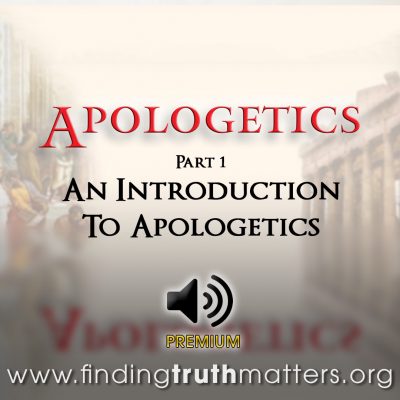
Apologetics Part 1 – Introduction To Apologetics, Premium Audio
Original price was: $1.75.$0.95Current price is: $0.95. -
Sale!
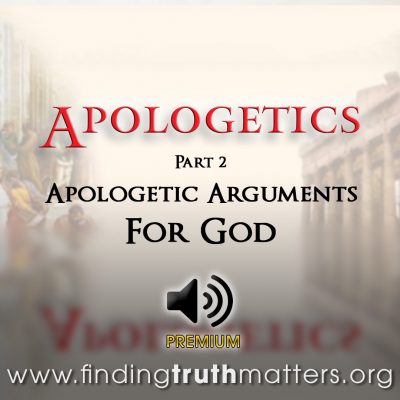
Apologetics Part 2 – The Apologetic Arguments For God, Premium Audio
Original price was: $1.75.$0.95Current price is: $0.95. -
Sale!
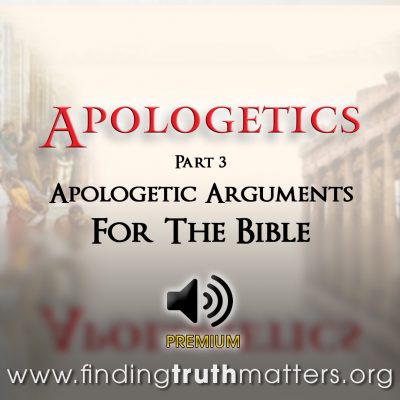
Apologetics Part 3 – The Apologetic Arguments For The Bible, Premium Audio
Original price was: $1.75.$0.95Current price is: $0.95. -
Sale!
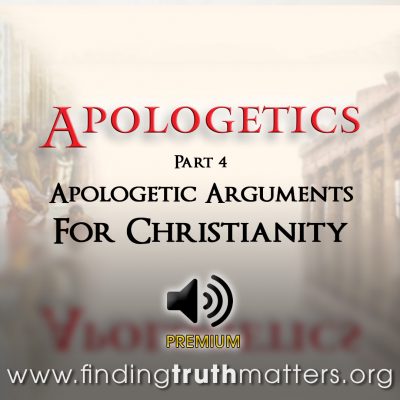
Apologetics Part 4 – The Apologetic Arguments For Christianity, Premium Audio
Original price was: $1.75.$0.95Current price is: $0.95.
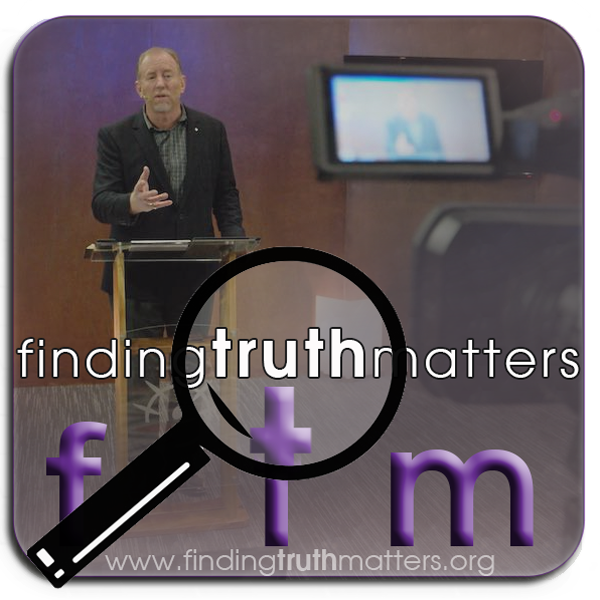





































No i’ll go and stay a sinner atheist, any one want to help me in my satanic sinner rituals to summon demons from hell and take over this mortal plane?